How Unacademy Generated ₹988 Crore Through Free Content: The Teacher-Influencer Strategy That Transformed EdTech
- Nayan Tomar
- Jul 22
- 5 min read
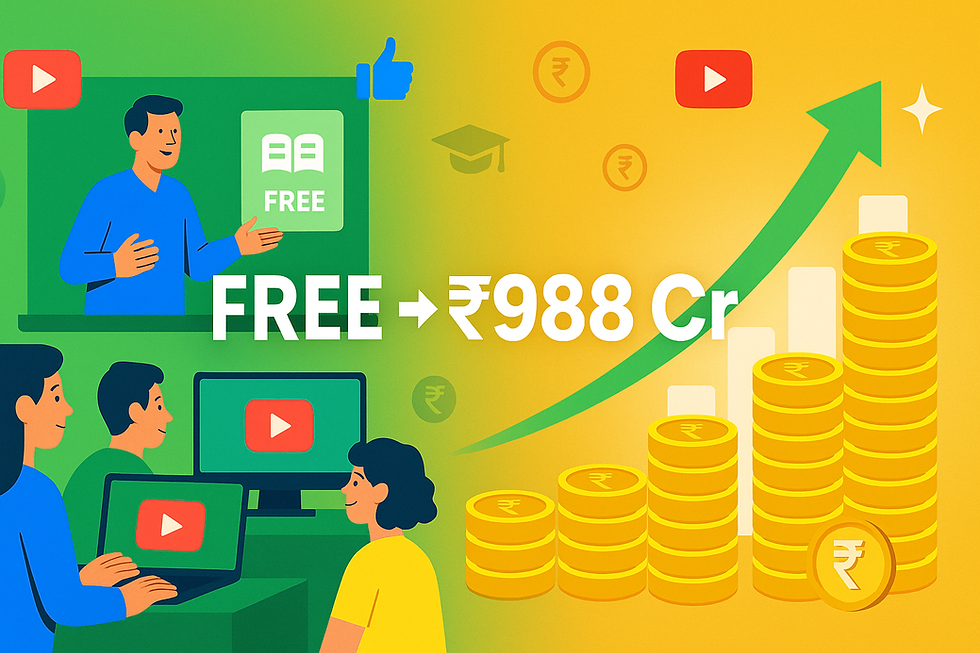
Reading Time: 5 minutes
From a simple YouTube channel to ₹988 crore revenue, Unacademy's freemium content marketing strategy built India's largest online education platform by proving that giving away 70% of your value for free can generate higher conversion rates and customer lifetime value than traditional paid-first educational models when combined with teacher-as-influencer positioning.
The Free Content Paradox: When Giving Away Creates More Value
Most EdTech companies in 2015 followed the traditional model: create courses, set high prices, and use aggressive sales tactics to convert leads. Unacademy took the opposite approach. They gave away their best content completely free on YouTube while charging only for premium features like live classes, doubt resolution, and community access.

The counter-intuitive strategy worked because free high-quality content builds trust faster than any marketing campaign. When students could access Roman Saini's complete UPSC preparation videos or Sumit Thakur's physics lectures without paying anything, they experienced the teaching quality firsthand. This eliminated the biggest friction in online education, the fear of paying for unknown teaching quality.
The numbers validate this approach: Unacademy now has over 62 million registered users, with free content serving as the primary acquisition channel. Their conversion rate from free users to paid subscribers sits at 8-12%, significantly higher than industry averages of 2-5% for cold traffic educational products. The free content strategy reduced customer acquisition cost by 60% compared to traditional digital marketing approaches.

But here's the real insight: the free content wasn't just marketing - it was product positioning. By showcasing teaching expertise through free videos, Unacademy positioned their teachers as subject matter experts and influencers rather than just instructors. Students didn't just buy courses; they bought access to their favorite teachers.

The Teacher-as-Influencer Model: Turning Educators into Personal Brands
Traditional educational institutions treat teachers as employees. Unacademy treats them as influencers with personal brands, social media followings, and fan communities. This shift in positioning transformed how online education marketing works.
Personal Branding Over Institutional Marketing
Instead of promoting "Unacademy Physics Course," they promoted "Sumit Thakur's Physics Masterclass." The difference might seem subtle, but it's revolutionary. Students connect with personalities, not institutions. When Roman Saini shares his UPSC journey, students don't just learn strategy - they build emotional connections that drive subscription decisions.
This teacher-influencer model creates viral marketing loops. Teachers with strong personal brands naturally promote their content across social media, creating organic reach that institutional marketing cannot match. Gaurav Munjal's LinkedIn posts about entrepreneurship or Kiran Bedi's motivational content generates millions of impressions without paid promotion.

The financial impact proves significant: teacher-led content generates 5x higher engagement rates than branded institutional content. More importantly, students who connect with specific teachers show 40% higher course completion rates and 3x higher lifetime value through multiple course purchases and referrals.

Community-Driven Retention Strategy
Unacademy's genius lies in understanding that education is inherently social. They didn't just create courses; they built communities around teachers and subjects. Free Telegram groups, live doubt-clearing sessions, and peer interaction features transform individual learning into collaborative experiences.
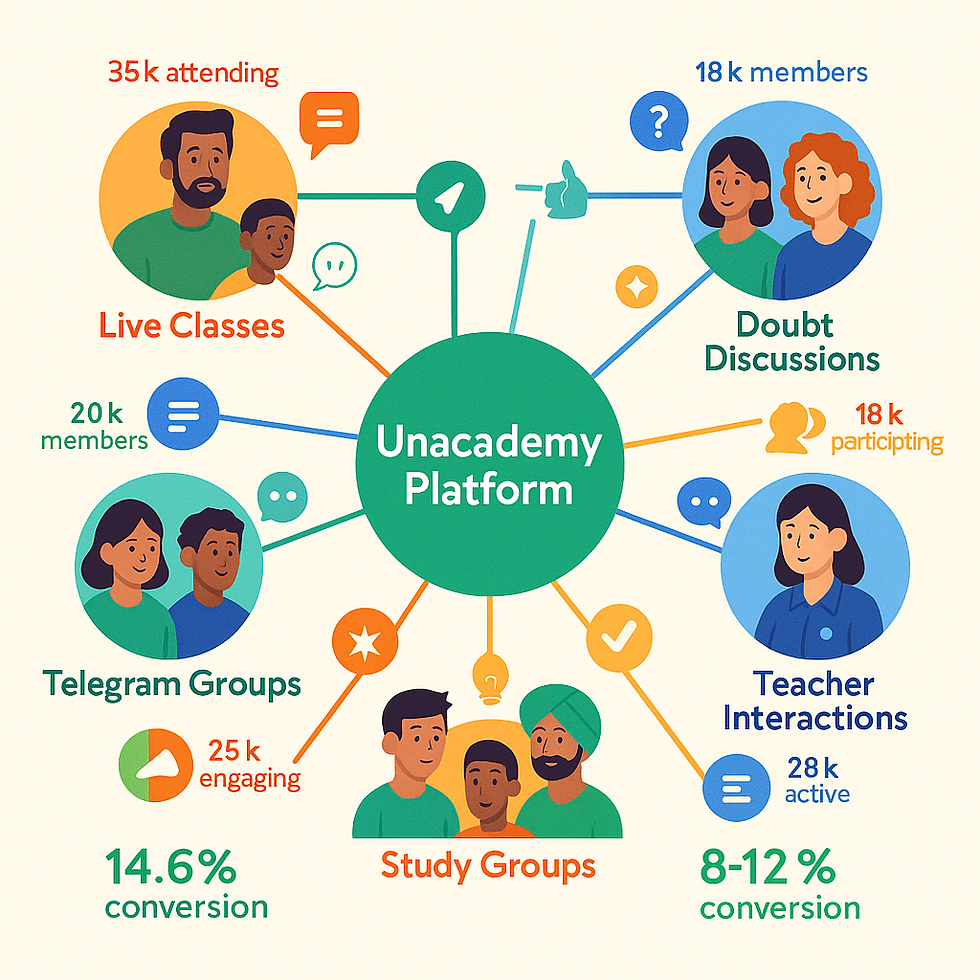
The community approach solves online education's biggest problem: isolation and dropout rates. Traditional online courses suffer from 85-95% dropout rates because students feel disconnected. Unacademy's community features create accountability, peer support, and social proof that maintain engagement throughout learning journeys.
The subscription model becomes logical rather than forced. Students who participate in free community discussions naturally want access to premium live sessions with their favorite teachers. The upgrade feels like joining an exclusive club rather than making a purchase decision.
The 70-30 Value Distribution: Strategic Content Gating That Works
Unacademy's freemium strategy follows a carefully calculated value distribution model. Approximately 70% of educational value comes through free content, while 30% requires paid subscription. This ratio prevents free users from feeling frustrated while giving paid users clear additional benefits.
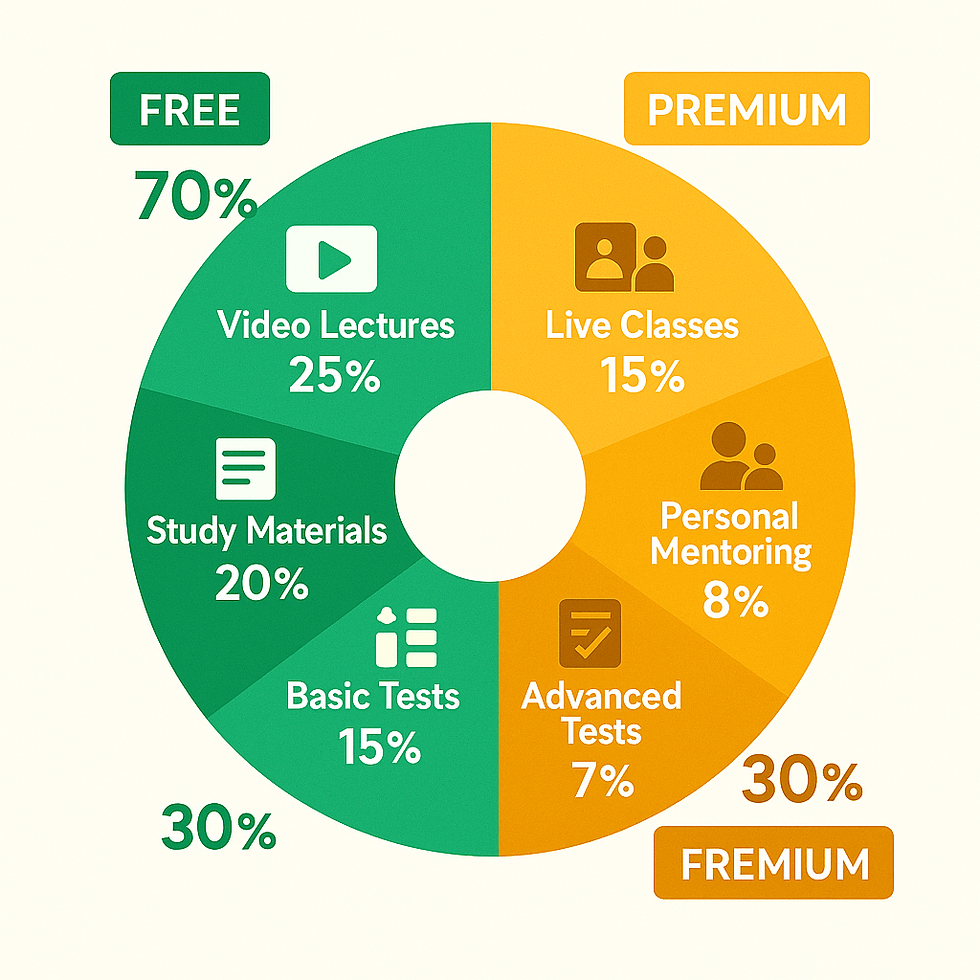
Free Tier Value Proposition:
- Complete recorded video lectures for all subjects
- Basic study materials and notes
- Access to teacher social media content and motivational videos
- Basic test series and quizzes
- Community forum participation
Paid Tier Premium Features:
- Live interactive classes with real-time doubt clearing
- Personalized learning paths and progress tracking
- Advanced test series with detailed analytics
- Direct teacher access through premium groups
- Exclusive study materials and shortcuts

The strategic brilliance lies in positioning paid features as convenience and community upgrades rather than essential learning requirements. Students can theoretically prepare for competitive exams using only free content, but paid features make the journey significantly easier and more engaging.
This approach generates higher customer satisfaction because users never feel cheated or forced into paying. When they do subscribe, they perceive clear additional value rather than basic feature access. The result: lower churn rates and higher renewal percentages compared to traditional subscription models.
Gamification Elements as Engagement Multipliers
Unacademy layered gamification throughout their freemium experience. Leaderboards, achievement badges, streak counters, and progress tracking create psychological engagement that traditional educational content lacks. Students compete with peers, celebrate milestones, and build learning habits through game-like mechanics.
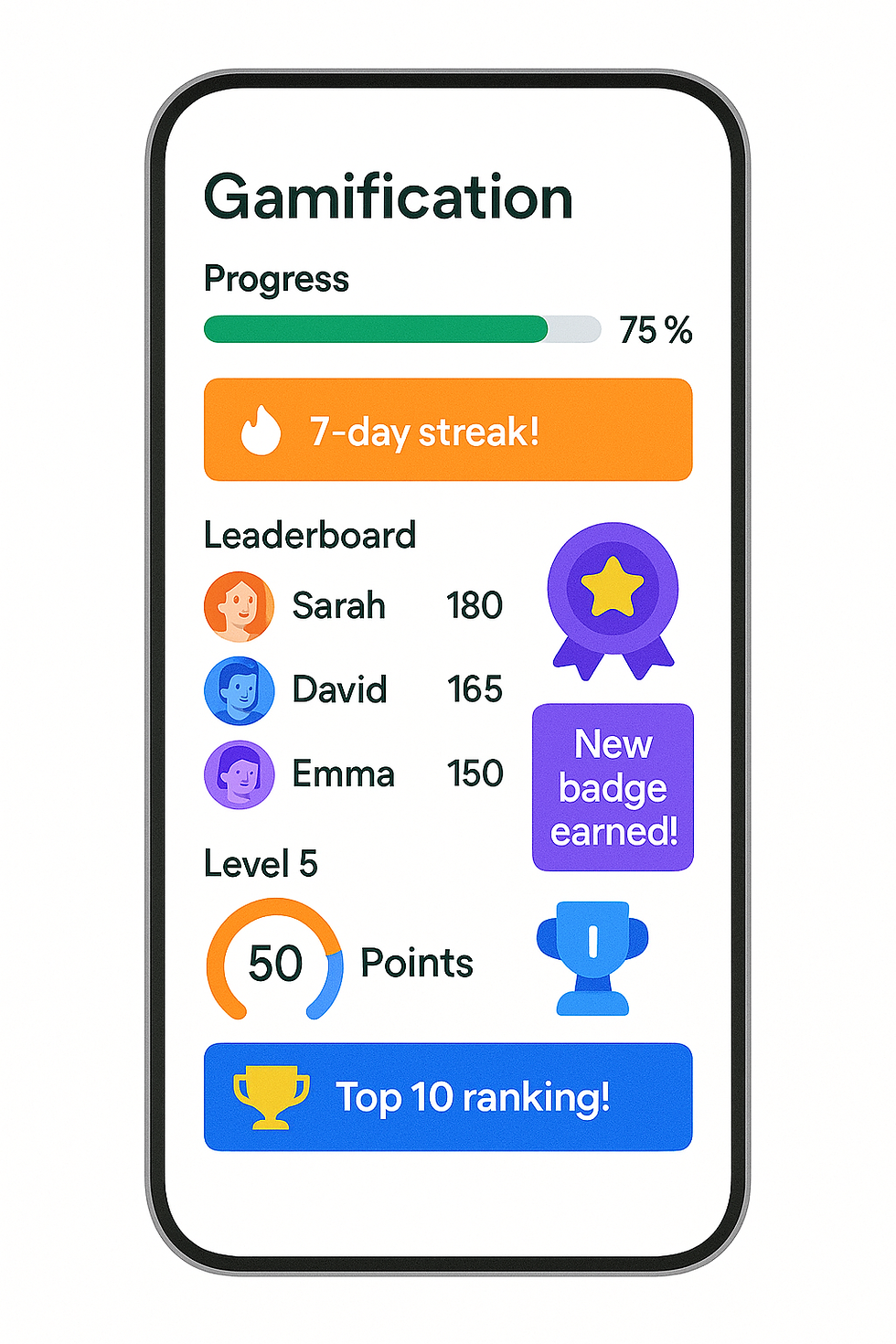
The gamification strategy works because competitive elements naturally encourage premium upgrades. Students who rank high on free leaderboards want access to premium features that can improve their performance further. The games create emotional investment that translates to financial investment.
More importantly, gamified learning generates social media sharing and organic marketing. Students naturally share achievements, streak updates, and leaderboard positions, creating user-generated marketing content that promotes both personal brands and the platform.
Strategic Takeaways: Building Freemium Content Empires
Unacademy's journey from YouTube channel to ₹988 crore revenue offers clear frameworks for content-driven business models across industries.
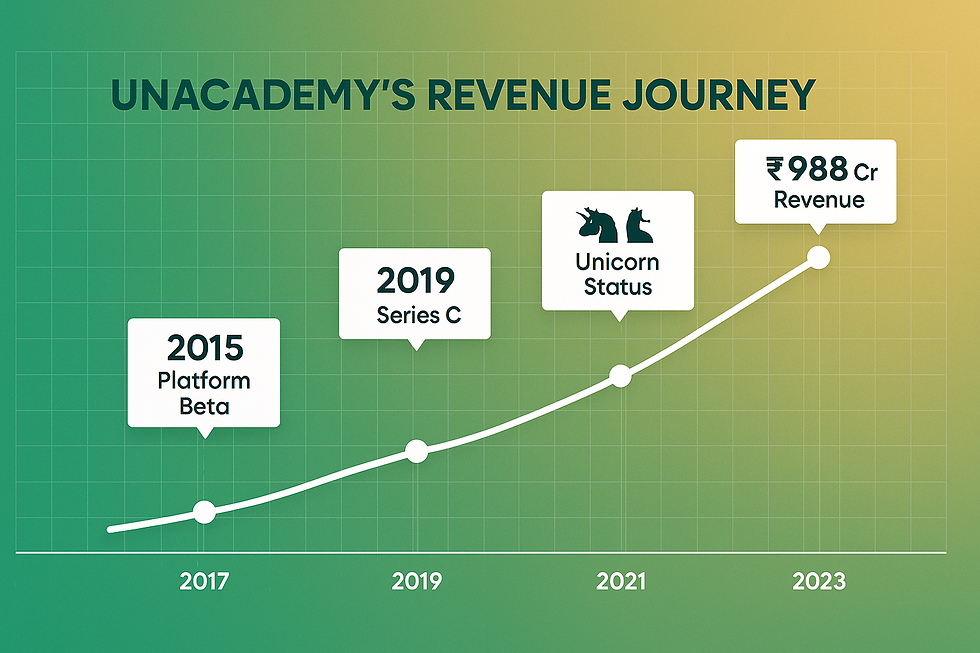
First, freemium strategies require exceptional free value. Half-hearted free content creates frustrated users rather than converted customers. Unacademy succeeded because their free content genuinely helps students achieve goals, building trust that converts to subscriptions.
Second, personality-driven marketing outperforms institutional branding in trust-dependent industries. Education, consulting, coaching, and similar sectors benefit more from personal brand positioning than corporate marketing approaches. People buy from people they trust and connect with emotionally.
Third, community features amplify both retention and conversion. Social learning elements, peer interactions, and collaborative features transform individual products into shared experiences that users don't want to leave.

The broader insight for marketers: freemium content marketing works when free value creates emotional investment rather than just product sampling. Students who spend hours watching Roman Saini's videos develop parasocial relationships that make subscription decisions emotional rather than purely rational.

Unacademy proved that giving away your best content can generate more revenue than keeping it behind paywalls, but only when combined with community building, personality positioning, and strategic value distribution that makes paid upgrades feel like natural progressions rather than forced conversions.
.png)
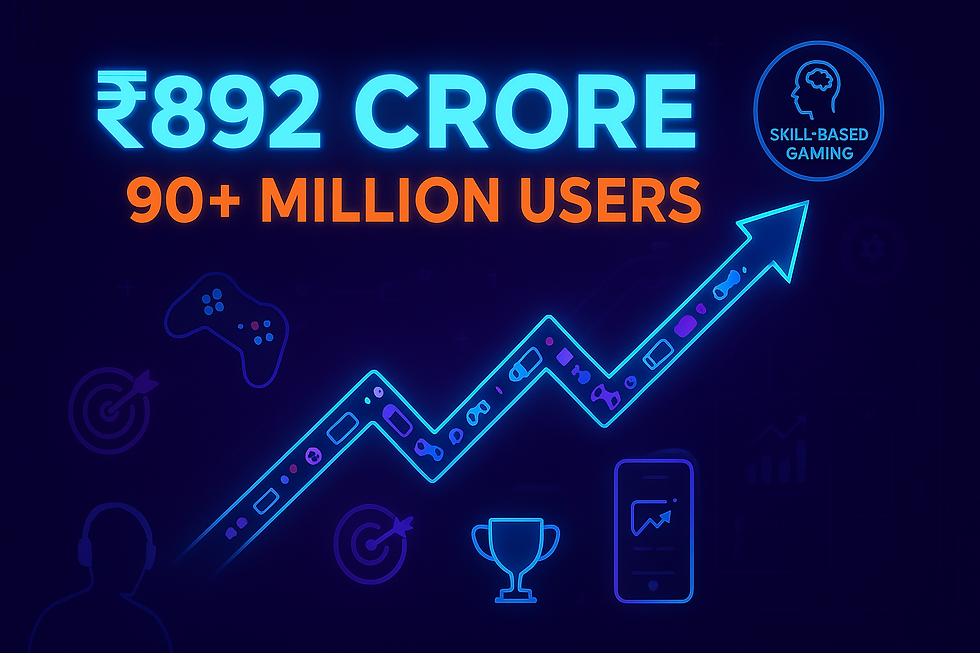
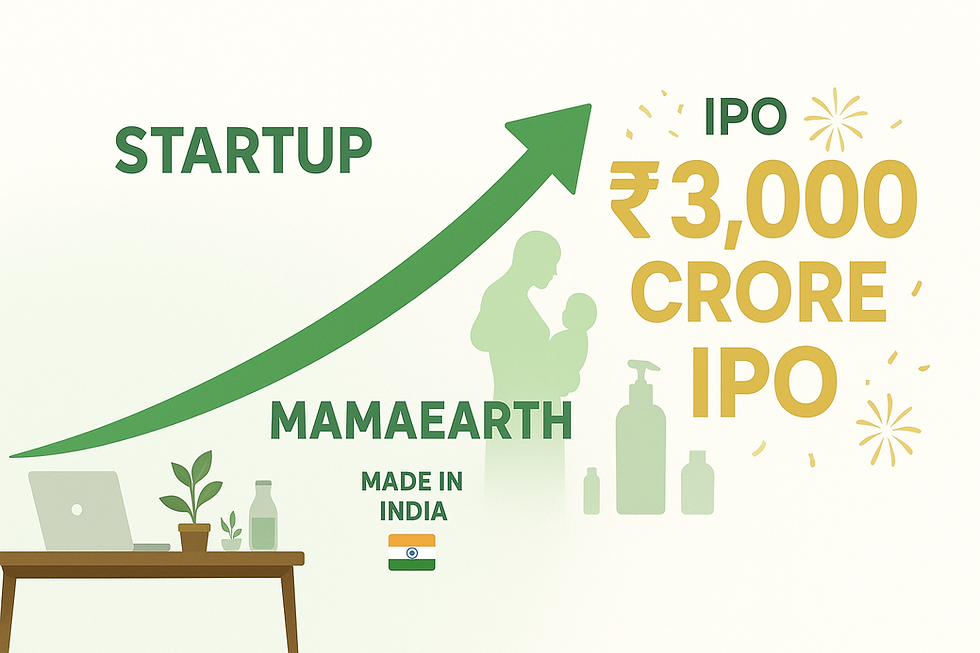
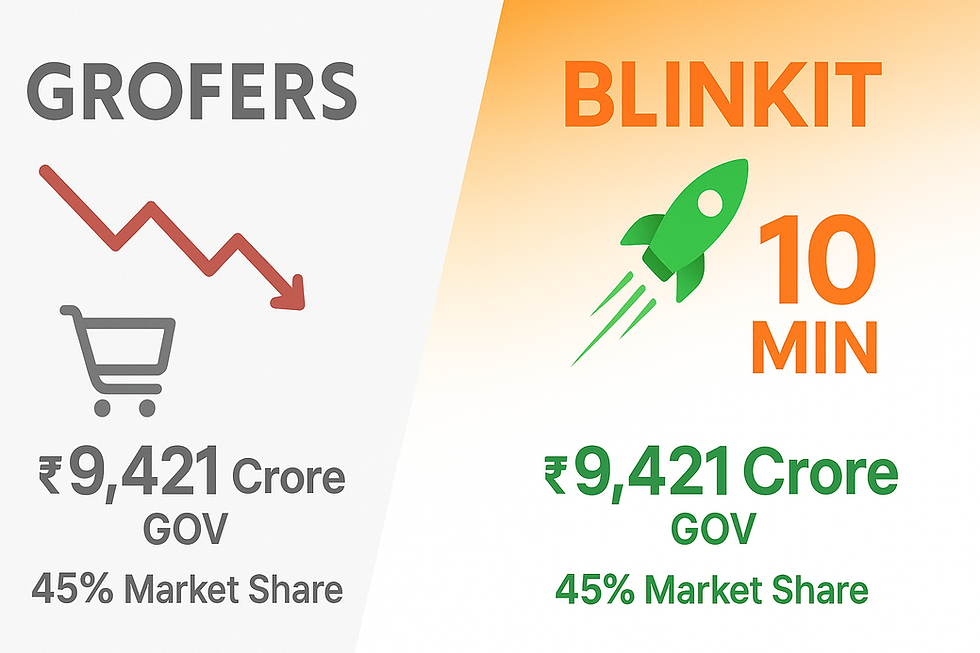
Comments